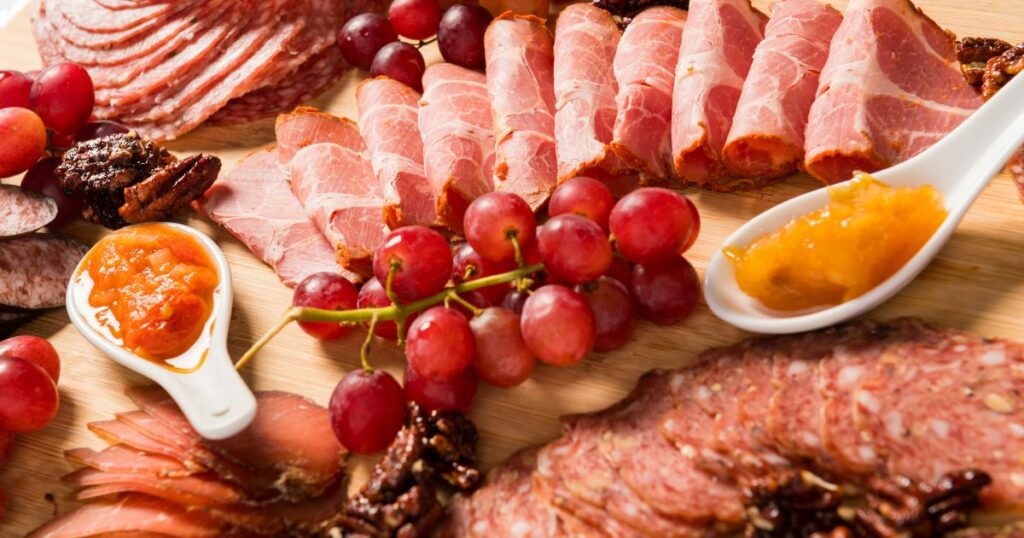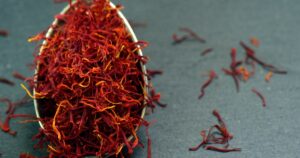🇫🇷 France: The Birthplace of Charcuterie
France is often considered the birthplace of charcuterie due to its long-standing culinary tradition of preserving and preparing meats. The term “charcuterie” itself is derived from the French words “chair,” meaning flesh, and “cuit,” meaning cooked. This art of transforming and preserving meats can be traced back to the Roman Empire, but it was in France where these techniques were refined and elevated to create the sophisticated and varied charcuterie we know today. The prominence of charcuterie in French culture is evident in the array of regional specialties, each with unique flavors and preparation methods, making France the epicenter of this culinary art form.
Saucisson Sec
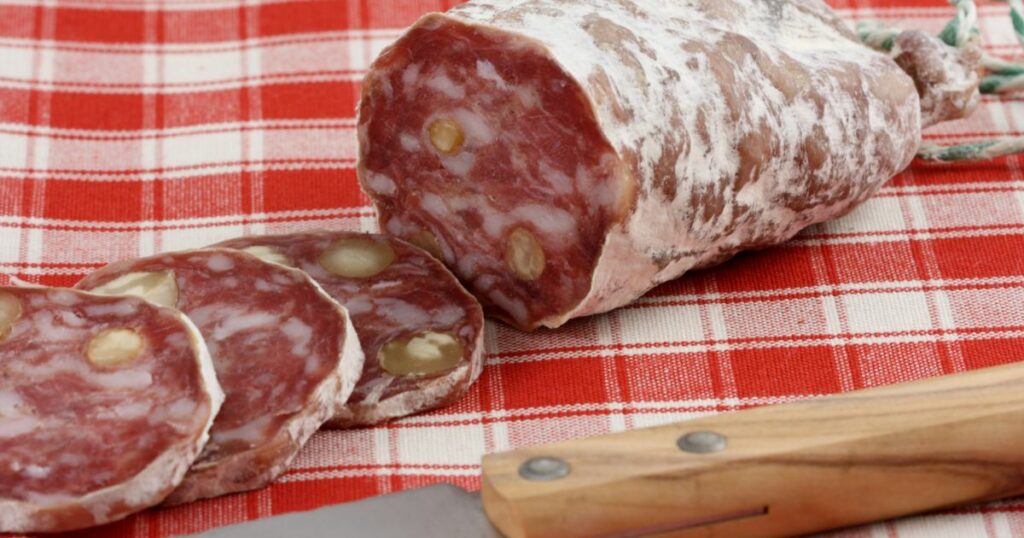
Saucisson sec is a classic French dry-cured sausage that is typically made from pork and seasoned with garlic, pepper, and red wine. The sausages are left to age for several weeks, developing a dense texture and complex, savory flavor. Saucisson sec is a staple in French charcuterie boards and is often enjoyed with a variety of cheeses, fruits, and bread.
Jambon de Bayonne
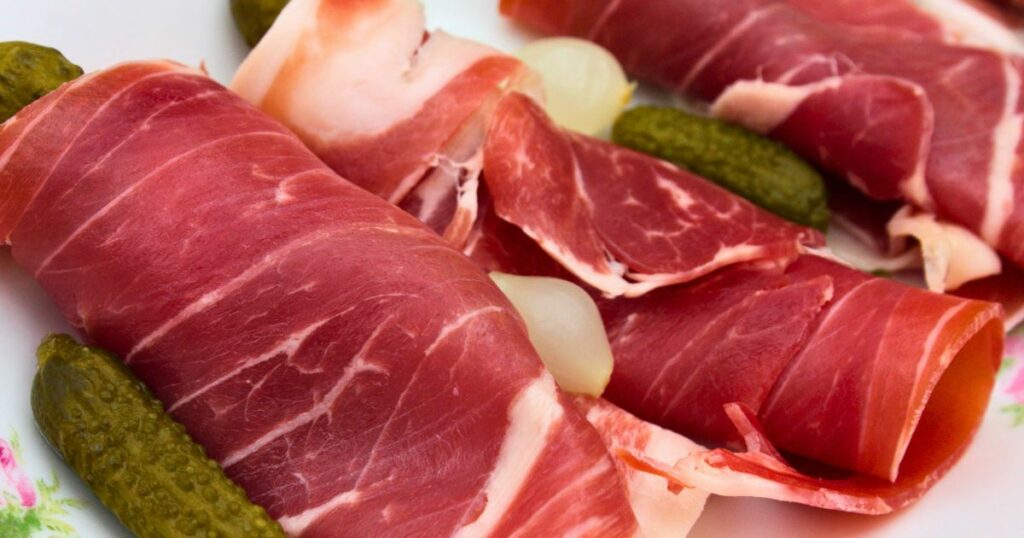
Jambon de Bayonne is a high-quality, air-dried ham from the Basque region of France. Named after the city of Bayonne, this ham is made from a specific breed of pig and is cured using a blend of salt, pepper, and other spices. The meat is then aged for at least seven months, resulting in a tender, flavorful ham with a distinctive, slightly sweet taste.
Rosette de Lyon
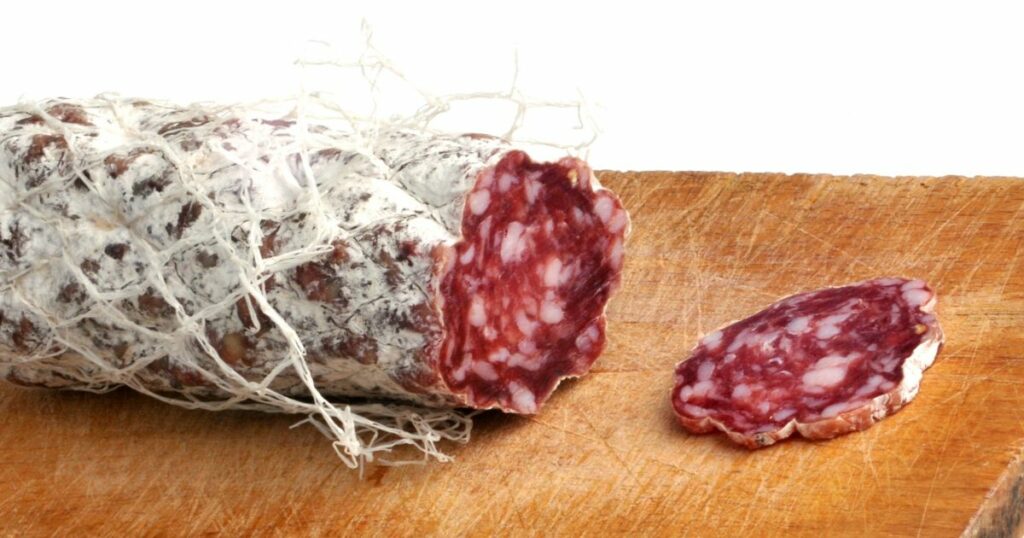
Rosette de Lyon is a traditional French cured sausage that is a favorite among charcuterie enthusiasts. Made from coarsely ground pork, this sausage is seasoned with garlic, white wine, and a variety of spices before being encased in a natural casing and aged for several months. The resulting flavor is rich, earthy, and slightly tangy, making it a perfect addition to any charcuterie board.
Noix de Jambon
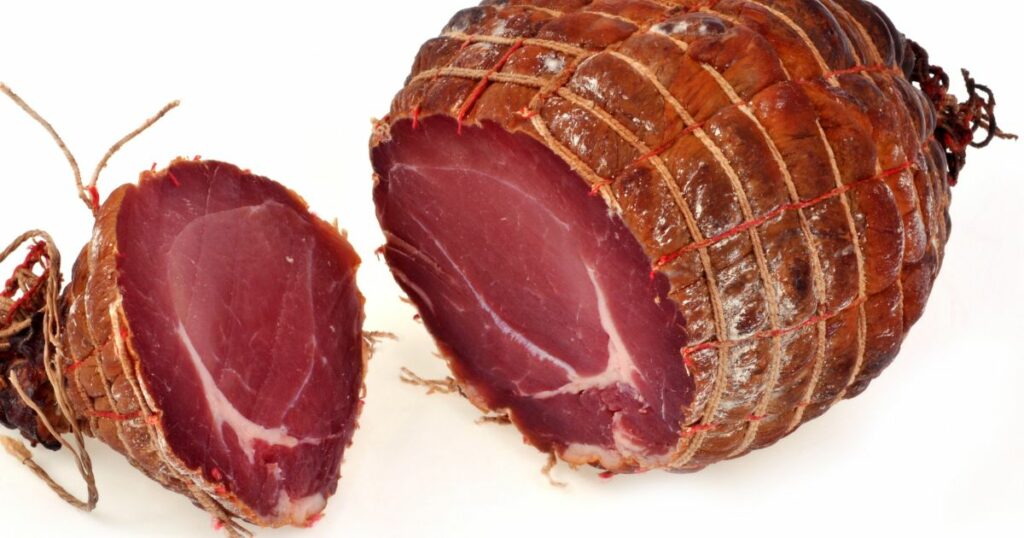
Noix de jambon is a French cured ham made from the lean, tender meat found around the pig’s hip joint. The meat is marinated in a mixture of spices, herbs, and red wine before being air-dried for several months. This process results in a firm, flavorful ham with a pleasantly mild, slightly sweet taste that is often enjoyed thinly sliced.
🇮🇹 Italy: La Dolce Vita in Cured Meats
Charcuterie’s presence in Italy is deeply rooted in the country’s rich culinary history. As in France, the art of preserving and preparing meats can be traced back to ancient Rome, where the techniques were used to prolong the shelf life of food. Over time, these techniques evolved and spread throughout the Italian peninsula, with various regions developing their own unique styles and flavors. Today, Italy is renowned for its diverse and delicious charcuterie, including salumi, prosciutto, and various regional sausages, which are celebrated as integral components of Italian cuisine.
Prosciutto di Parma
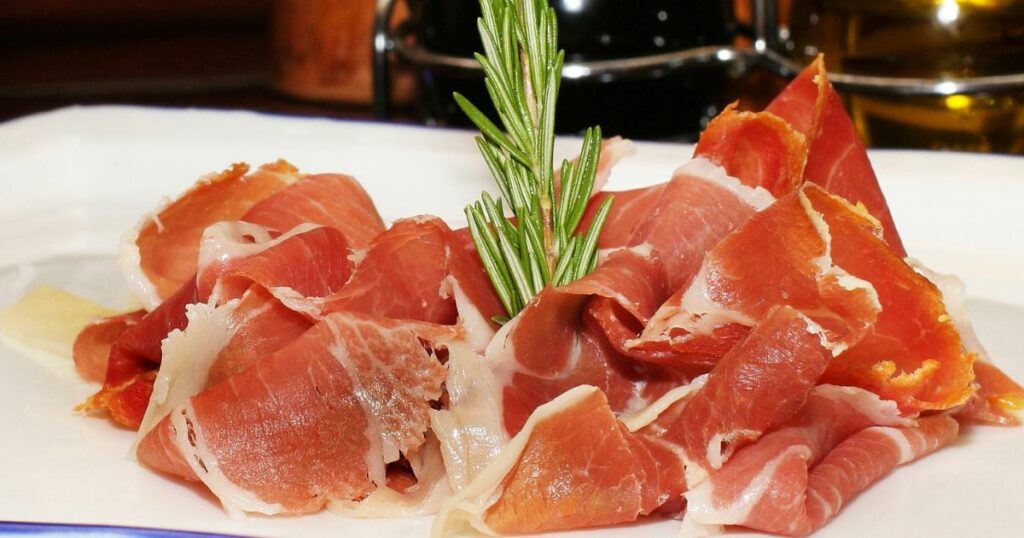
Prosciutto di Parma is a world-renowned Italian ham, often referred to as the king of charcuterie. Hailing from the Parma region, this ham is made from specially bred pigs and cured using only salt, time, and air. The result is a delicate, sweet, and salty flavor with a melt-in-your-mouth texture that has been celebrated for centuries.
Salami
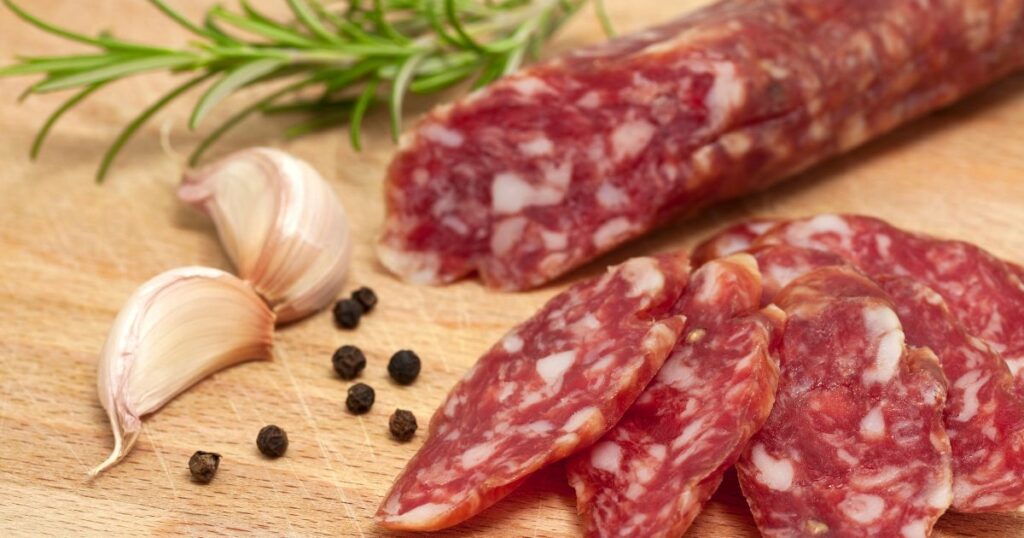
Salami is a type of cured sausage that is made from ground meat, typically pork, and seasoned with various spices and herbs. There are many varieties of Italian salami, each with its unique flavors and textures. Some popular options include Genoa salami, soppressata, and finocchiona, which is flavored with fennel seeds.
Bresaola
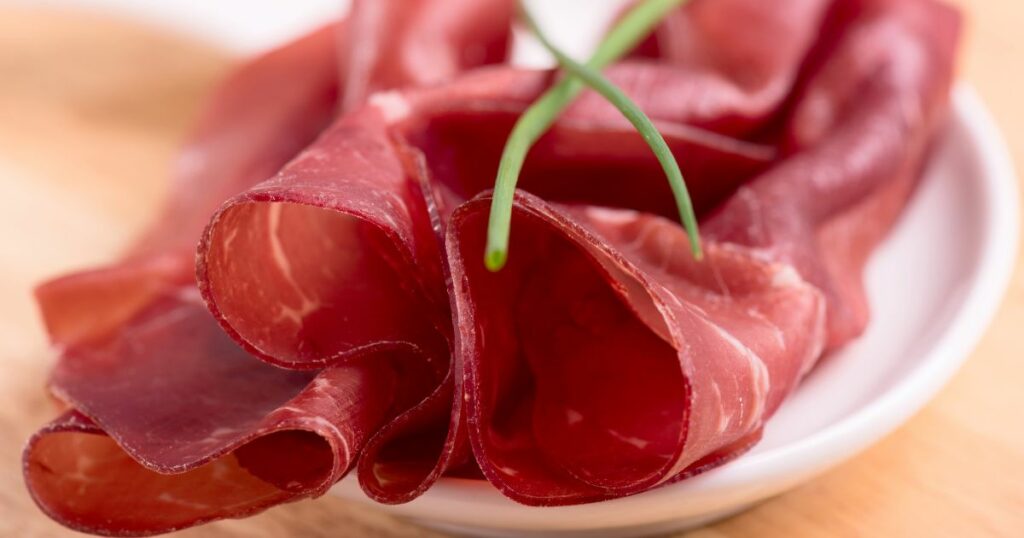
Bresaola is a lean, air-dried beef that originates from the Lombardy region in Northern Italy. The meat is seasoned with a blend of salt, herbs, and spices before being aged for several months. The result is a dark, rich, and aromatic meat with a firm texture and complex flavor profile.
Coppa
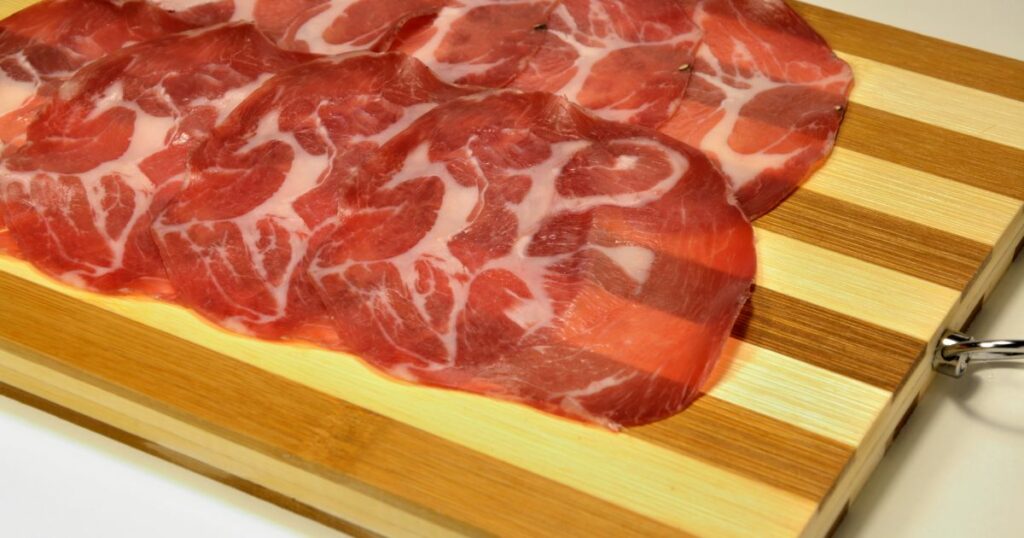
Coppa, also known as capocollo or capicola, is a traditional Italian pork cold cut made from the neck or shoulder of the pig. The meat is seasoned with a variety of spices, including garlic, paprika, and fennel seeds, then rolled and aged for several months. The final product is a tender, flavorful charcuterie item that is enjoyed both on its own and in sandwiches.
🇪🇸 Spain: Tapas and Tempting Cured Meats
The art of charcuterie in Spain is not only influenced by the Romans but also by the Moors, Spain developed its unique approach to charcuterie, incorporating distinct flavors and techniques. Over time, various regions in Spain crafted their own specialties, each showcasing the diverse tastes and textures of the nation’s charcuterie. Today, Spain is renowned for its exquisite cured meats such as jamón ibérico, chorizo, and lomo, which have become an essential part of Spanish cuisine and culture.
Jamón Ibérico
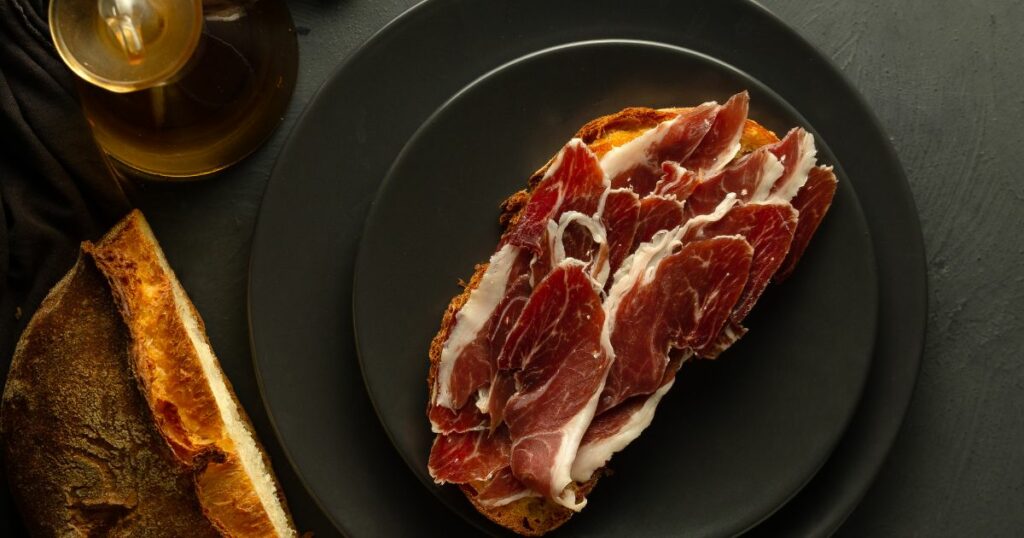
Jamón Ibérico is a highly prized Spanish ham made from the Black Iberian pig. Raised on a diet of acorns, these pigs produce a rich, marbled meat that is cured for a minimum of 24 months. The resulting flavor is complex, nutty, and buttery, with a melt-in-your-mouth texture that has earned it the reputation of being one of the finest hams in the world.
Chorizo
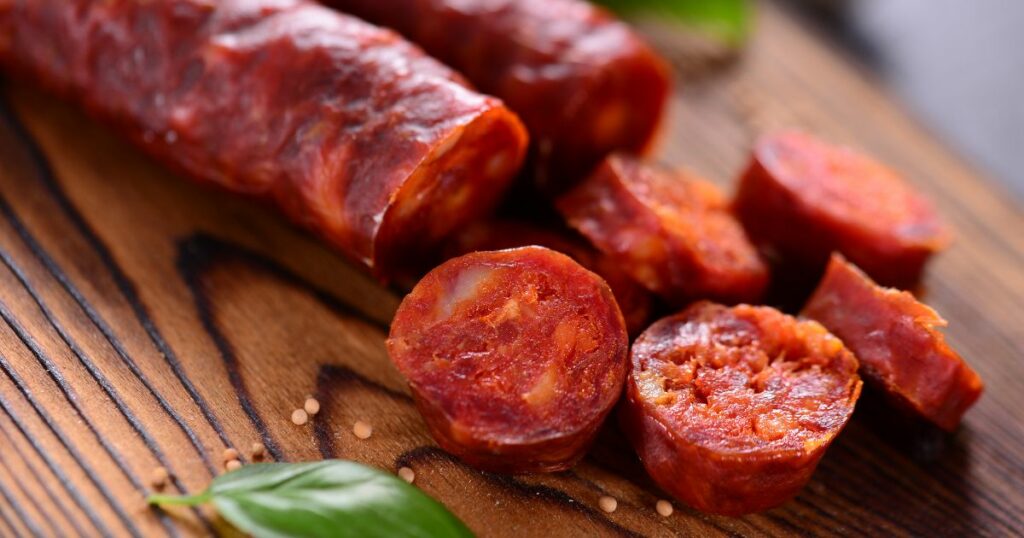
Chorizo is a flavorful, spicy sausage that is popular in Spain and Latin America. Spanish chorizo is typically made from coarsely ground pork and seasoned with smoked paprika, garlic, and other spices. The sausage can be enjoyed fresh or cured, and it’s a staple in many Spanish dishes, such as paella and tapas.
Lomo Embuchado
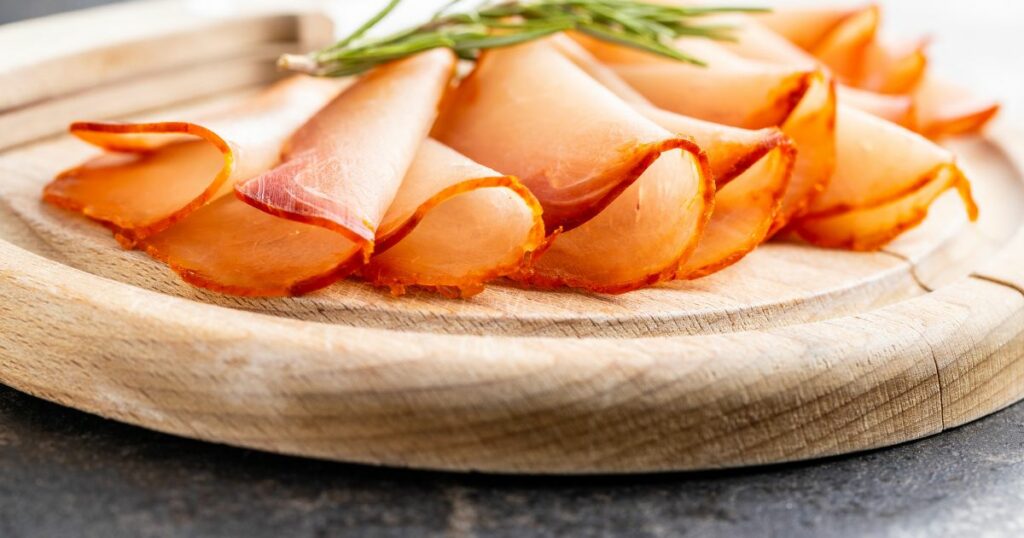
Lomo embuchado is a cured pork loin that is a popular charcuterie choice in Spain. The loin is marinated in a blend of spices and herbs, including paprika, garlic, and oregano, before being air-dried for several months. The result is a tender, flavorful meat with a delicate balance of sweet, salty, and savory notes.
Cecina
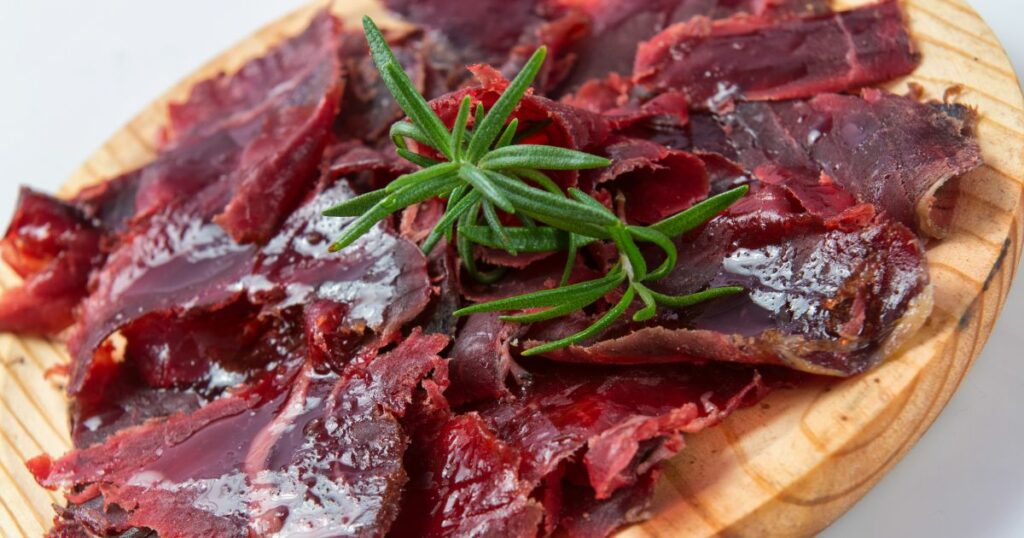
Cecina is a Spanish air-dried beef that is similar to Italian bresaola. The meat is typically made from the hind leg of the cow and is seasoned with a mixture of salt, garlic, and smoked paprika before being aged for up to a year. Cecina boasts a rich, smoky flavor with a firm texture that is often served thinly sliced alongside other tapas dishes.
🇵🇹 Portugal: A Taste of the Iberian Peninsula
As various regions within Portugal cultivated their own gastronomic identities, they also crafted their own charcuterie specialties, reflecting the diverse tastes and techniques found across the nation. Today, Portuguese charcuterie is celebrated for its unique offerings, such as presunto, chouriço, alheira, and salpicão, which are beloved components of Portugal’s culinary landscape.
Presunto
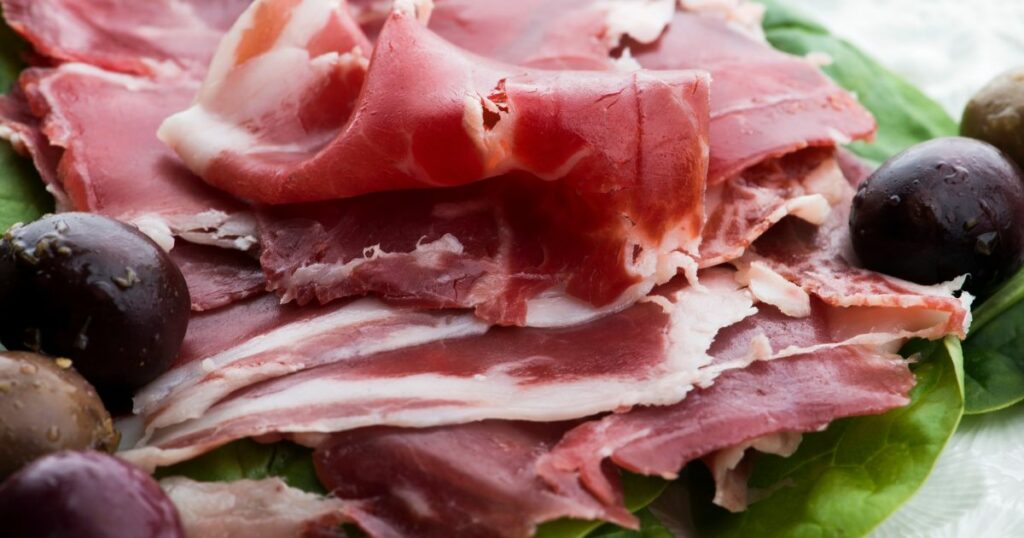
Presunto is a Portuguese dry-cured ham that is similar to Spanish jamón or Italian prosciutto. Made from the hind leg of a pig, presunto is cured using a blend of salt, sugar, and other seasonings before being aged for several months, or even years. The final product is a tender, flavorful ham with a subtle, slightly sweet taste that can be enjoyed thinly sliced as part of a charcuterie board or in various Portuguese dishes.
Chouriço
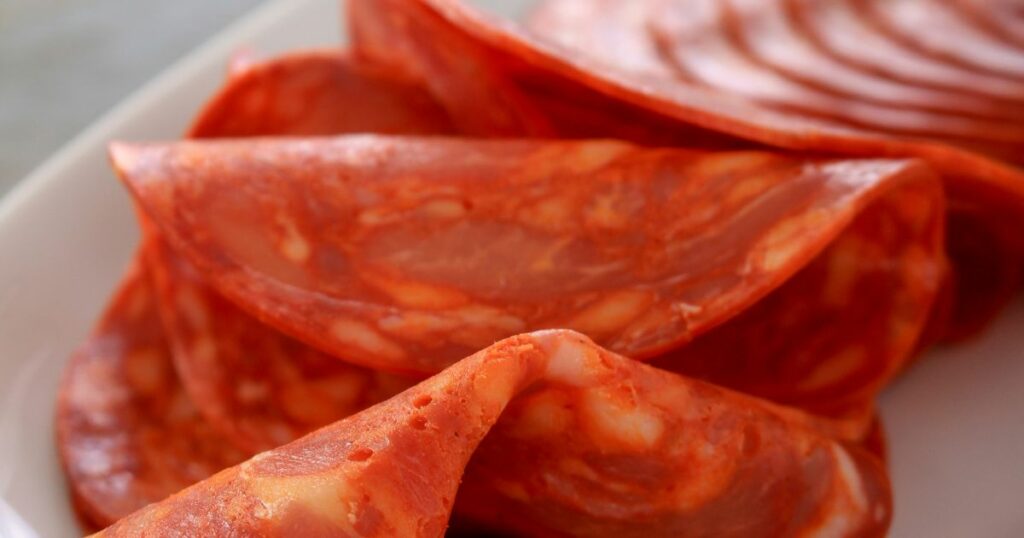
Chouriço is a Portuguese smoked sausage made from a mixture of pork, fat, and a variety of spices, including garlic, paprika, and red pepper flakes. The sausage is traditionally smoked over wood from the indigenous Portuguese Holm oak tree, resulting in a rich, smoky flavor with a slightly spicy kick. Chouriço is enjoyed in a variety of Portuguese dishes, such as caldo verde soup, or served as part of a charcuterie board.
Alheira
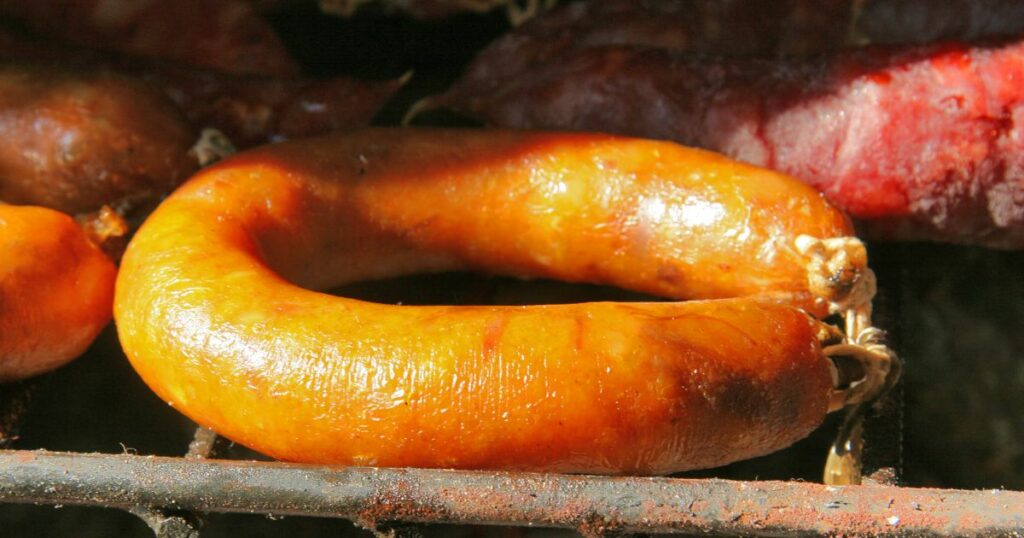
Alheira is a unique Portuguese sausage that is made from a mixture of various meats, such as pork, chicken, or even game, and bread. The sausage is seasoned with garlic, paprika, and other spices before being smoked and cooked. Alheira has a soft, tender texture and a rich, savory flavor that is enjoyed grilled or fried and served with a variety of accompaniments, such as rice, potatoes, or salad.
Salpicão
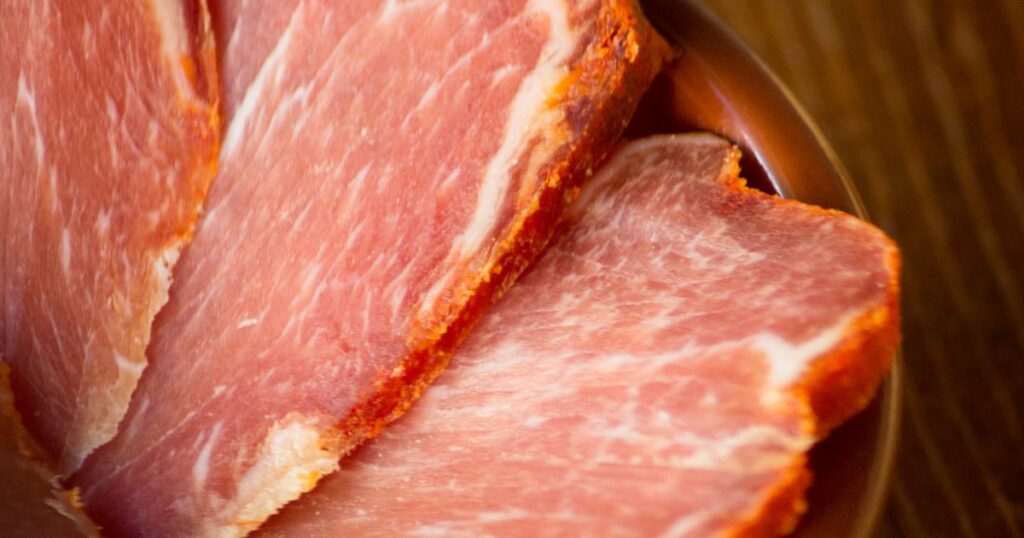
Salpicão is a Portuguese cured sausage that is made from a mixture of pork loin and fat, seasoned with garlic, red pepper paste, and white wine. The sausage is encased in a natural casing and aged for several weeks, resulting in a firm, flavorful sausage with a slightly tangy taste. Salpicão is often enjoyed thinly sliced as part of a charcuterie board or used as an ingredient in various Portuguese dishes.
🇩🇪 Germany: Robust Flavors and Time-Honored Techniques
Germany gets its charcuterie roots also from Roman influence at their borders and their exchanges with the Gallic tribes up to the mid ages with monks developing techniques to preserve meats for long winters and lean times. With time they also crafted their own charcuterie specialties, reflecting the nation’s creativity and culinary prowess. Today, German charcuterie, with its robust flavors and offerings such as bratwurst and schinken, has become an essential part of the country’s food culture.
Black Forest Ham
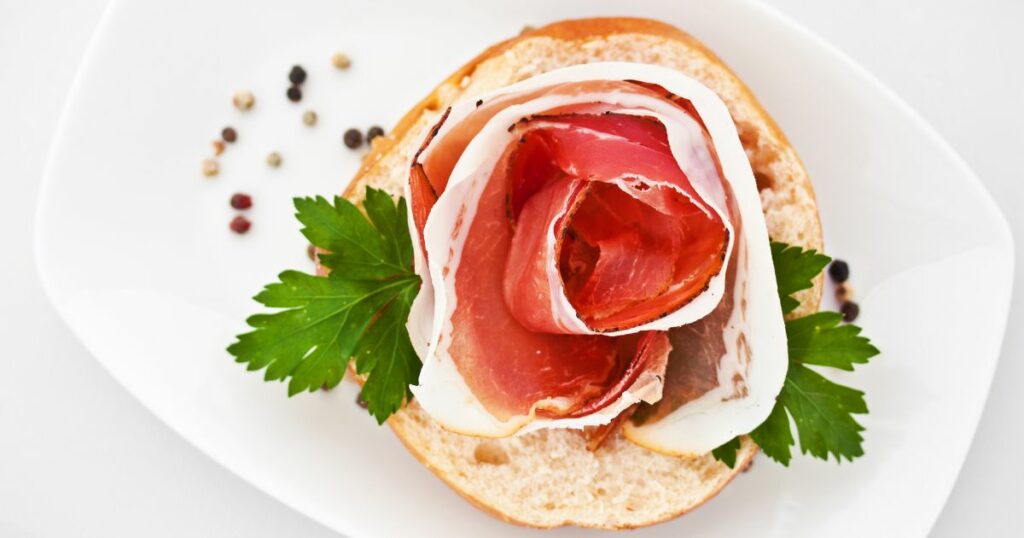
Black Forest ham, or Schwarzwälder Schinken, is a smoked, dry-cured ham from the Black Forest region of Germany. The ham is seasoned with a blend of garlic, juniper berries, coriander, and other spices before being cold-smoked over a mixture of fir and beechwood. The result is a dark, flavorful ham with a unique smoky taste that is a popular addition to charcuterie boards and sandwiches.
Landjäger
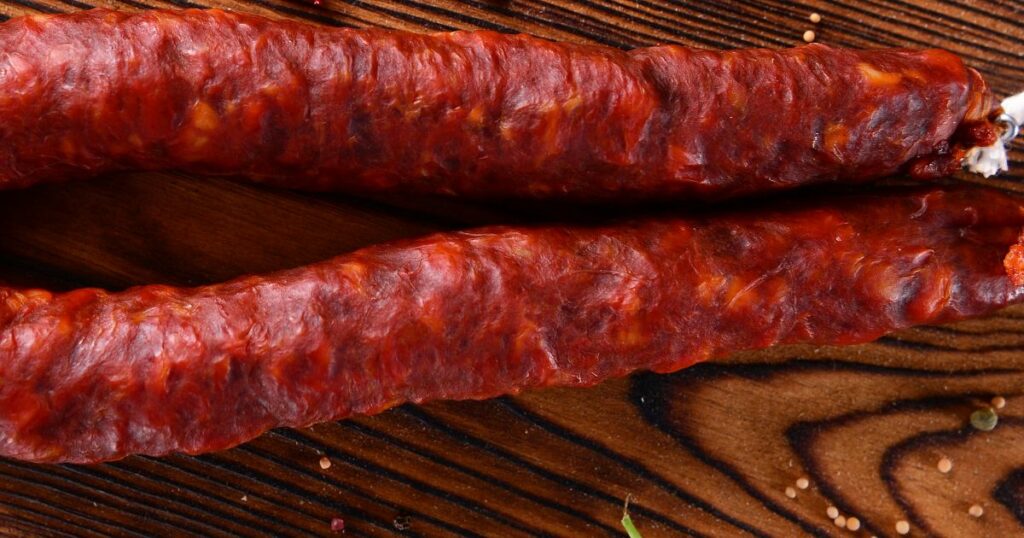
Landjäger is a semi-dried German sausage that is made from a mixture of pork and beef. The sausage is seasoned with a variety of spices, including garlic, coriander, and caraway seeds, then pressed into a square or rectangular shape and air-dried. The resulting texture is dense and chewy, with a robust, savory flavor that makes it a popular snack or addition to charcuterie platters.
Mettwurst
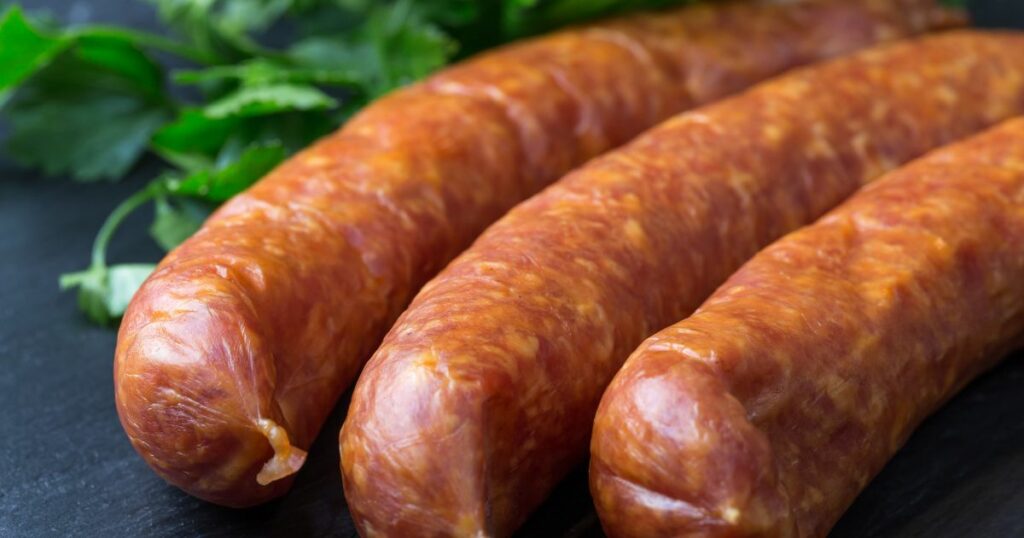
Mettwurst is a German cured sausage that is typically made from ground pork and seasoned with a variety of spices, including garlic, pepper, and allspice. The sausage is often smoked and can be enjoyed either raw or cooked, depending on the specific preparation. Mettwurst has a rich, hearty flavor and is commonly enjoyed in sandwiches or as part of a charcuterie board.
Speck
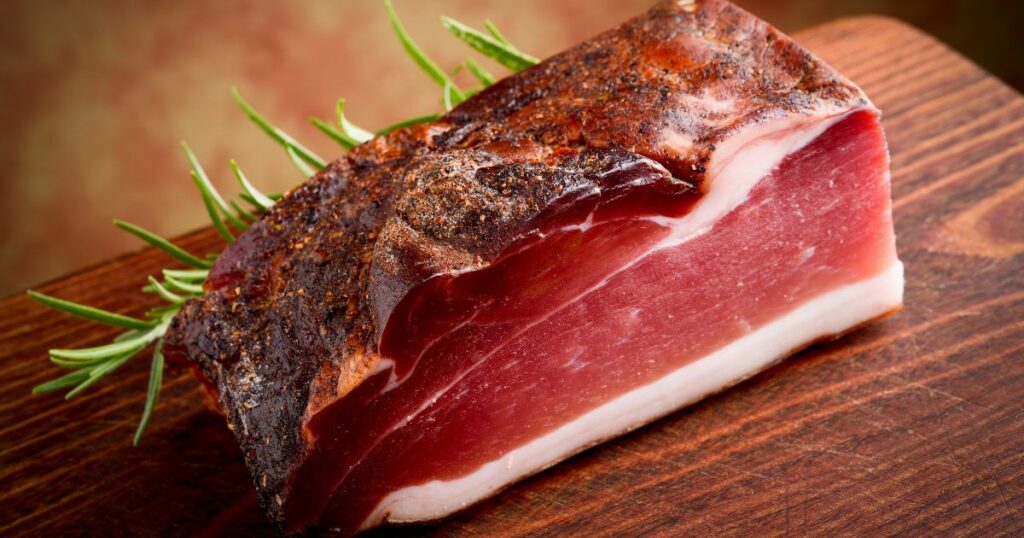
Speck is a German smoked and cured pork product that is similar to Italian pancetta. Made from the pork belly, speck is seasoned with a blend of salt, pepper, and other spices before being cold-smoked over beechwood and aged for several months. The result is a rich, smoky, and slightly sweet meat with a firm texture that can be enjoyed on its own or as an ingredient in a variety of dishes.
🇺🇸 United States: An American Spin on Charcuterie
Charcuterie arrived in America with the influx of European immigrants who brought their culinary traditions and expertise in meat preservation. As these newcomers settled in different parts of the country, they adapted their charcuterie techniques to the local ingredients and palates, resulting in a diverse array of American charcuterie styles. Over time, this fusion of European heritage and American innovation gave rise to unique regional specialties, reflecting the multicultural nature of the United States. Today, American charcuterie is a vibrant and evolving aspect of the nation’s culinary landscape, embracing both traditional and contemporary flavors and methods.
Country Ham
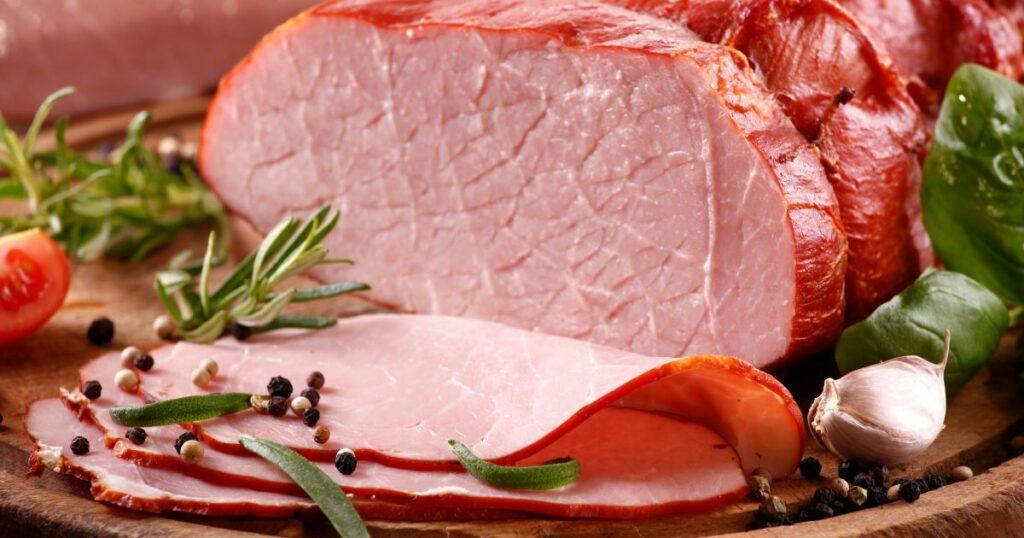
Country ham is a Southern United States specialty made from the hind leg of the pig. The meat is dry-cured with a mixture of salt, sugar, and other spices before being aged for several months, or even years. The final product is a dense, salty ham with a rich, complex flavor that is often enjoyed thinly sliced and served with biscuits, grits, or other traditional Southern dishes.
Pepperoni

Pepperoni is a popular American cured sausage that is made from a mixture of beef and pork. The sausage is seasoned with a variety of spices, including paprika, garlic, and red pepper flakes, giving it a characteristic spicy flavor. Pepperoni is often enjoyed as a topping on pizza or as part of a charcuterie board.
Andouille
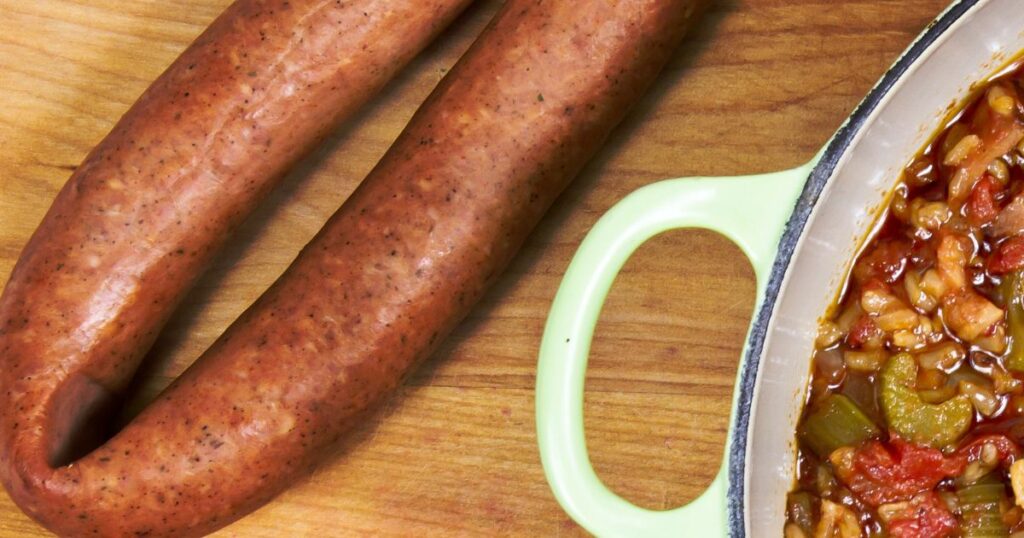
Andouille, also known as Cajun Sausage is a smoked sausage that originates from the French-influenced Louisiana region of the United States. Made from coarsely ground pork, the sausage is seasoned with a blend of spices, including garlic, cayenne pepper, and thyme, before being smoked over pecan wood or sugar cane. The result is a flavorful, slightly spicy sausage that is a key ingredient in many Cajun dishes, such as gumbo and jambalaya.
Soppressata
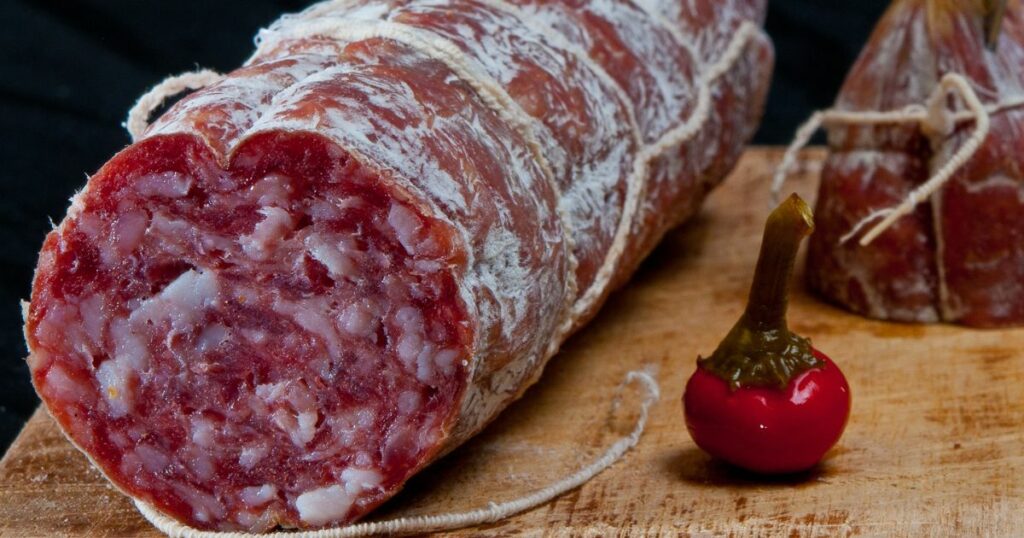
Although soppressata originates from Italy, it has become a popular charcuterie item in the United States as well. American-made soppressata is typically made from coarsely ground pork and seasoned with a variety of spices, including garlic, fennel seeds, and red pepper flakes. The sausage is then aged for several months, developing a rich, slightly spicy flavor that is enjoyed on its own or as part of a charcuterie board.
🇬🇧 United Kingdom: A British Twist on Charcuterie
With the influence of their European neighbors, especially the Romans and later the French Normans, the British adapted and developed their own unique approach to charcuterie. As different regions within the UK established their own culinary identities, they crafted regional charcuterie specialties, reflecting the diverse tastes and traditions found across the nation. Today, British charcuterie, with its distinctive offerings such as brawn, black pudding, and Bath chaps, is an integral part of the country’s gastronomic heritage, representing both its historical roots and contemporary creativity.
Brawn
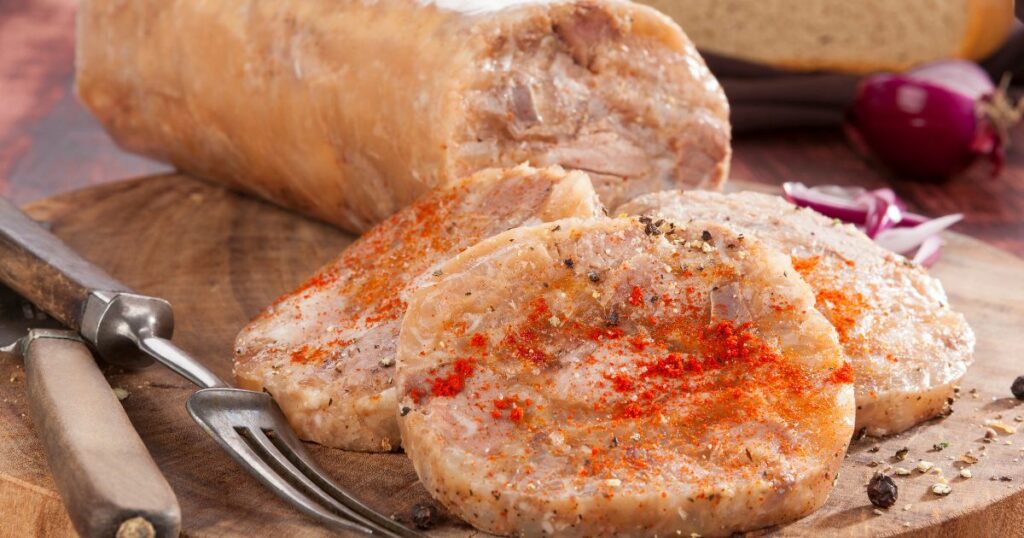
Brawn, also known as head cheese or potted meat, is a traditional British charcuterie item made from the head of a pig or calf. The meat is boiled until tender and then combined with various seasonings and herbs before being pressed into a mold and allowed to set. The result is a flavorful, gelatinous terrine-like dish that is often enjoyed sliced and served with bread and pickles.
Black Pudding
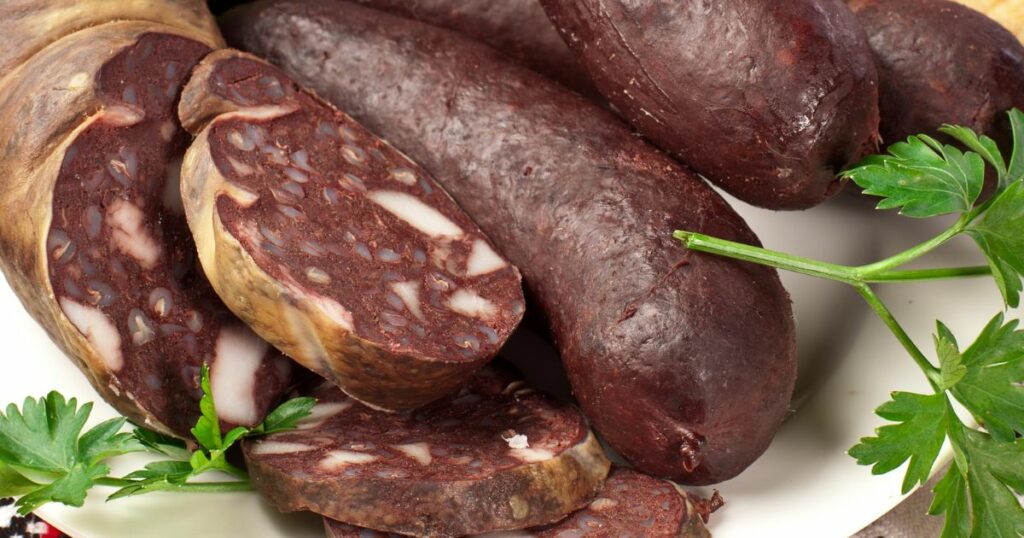
Black pudding is a distinctive British sausage made from a mixture of pig’s blood, oatmeal, and a variety of spices and seasonings. The sausage is typically cooked by boiling, grilling, or frying and has a rich, earthy flavor with a slightly crumbly texture. Black pudding is a popular component of a traditional British breakfast, as well as being enjoyed as part of a charcuterie board.
Bath Chaps
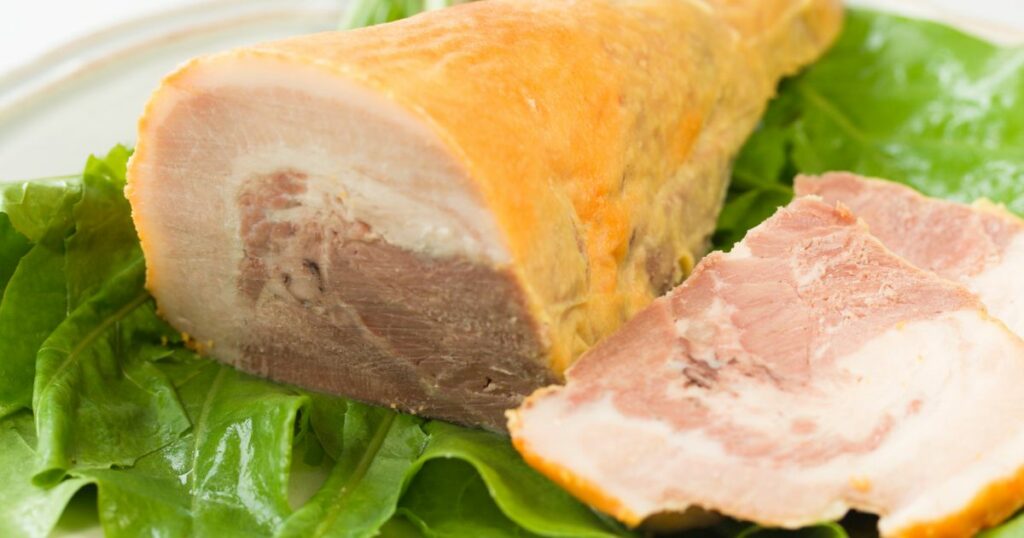
Bath chaps are a traditional British charcuterie item made from the cured and smoked cheek of a pig. The meat is seasoned with a blend of salt, sugar, and spices before being smoked, resulting in a tender, flavorful cut that is similar in taste and texture to bacon. Bath chaps are often enjoyed grilled or fried, served alongside other charcuterie items, or as part of a ploughman’s lunch.
British Air-Dried Ham
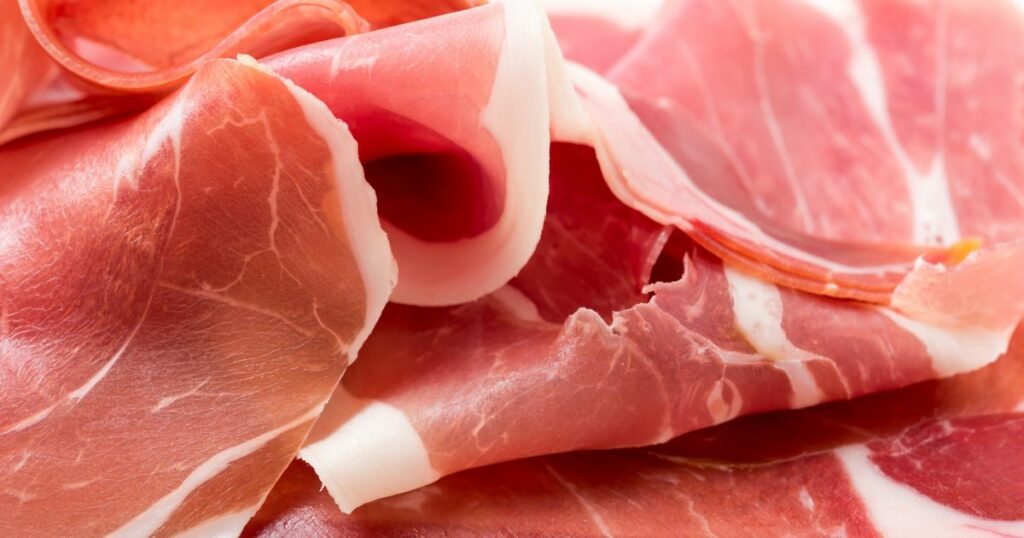
While not as well-known as its European counterparts, British air-dried ham is a delicious and unique charcuterie option. Similar to Italian prosciutto or Spanish jamón, British air-dried ham is made from the hind leg of a pig and is cured using a blend of salt, sugar, and other seasonings before being aged for several months. The final product is a tender, flavorful ham with a subtle, slightly sweet taste that can be enjoyed on its own or as part of a charcuterie board.
🇭🇺 Hungary: A Taste of Eastern European Tradition
Hungarian culinary traditions absorbed influences from surrounding regions, including Austria, Germany, and the Ottoman Empire, which contributed to the development of a unique Hungarian approach to charcuterie. ungarian charcuterie is celebrated for its distinctive offerings, such as mangalica, kolbász, and szalonna, which have become defining elements of Hungary’s flavorful, hearty and sometimes spicy cuisine.
Gyulai Kolbász
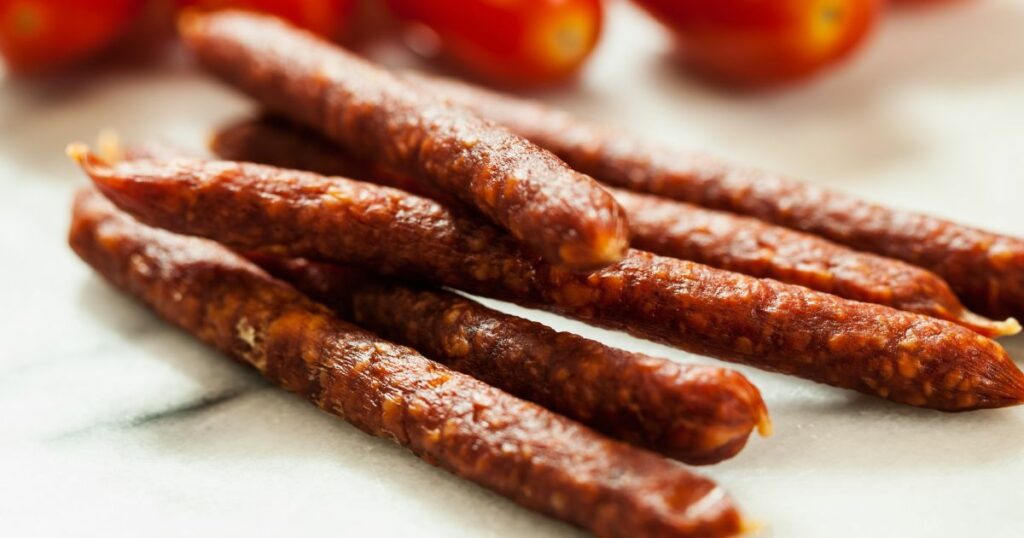
Gyulai kolbász is a Hungarian smoked sausage that is named after the town of Gyula. The sausage is made from coarsely ground pork and seasoned with a variety of spices, including paprika, garlic, and caraway seeds. After being stuffed into a natural casing, the sausage is smoked over beechwood, resulting in a rich, smoky flavor that is enjoyed in a variety of Hungarian dishes or as part of a charcuterie board.
Csabai Kolbász
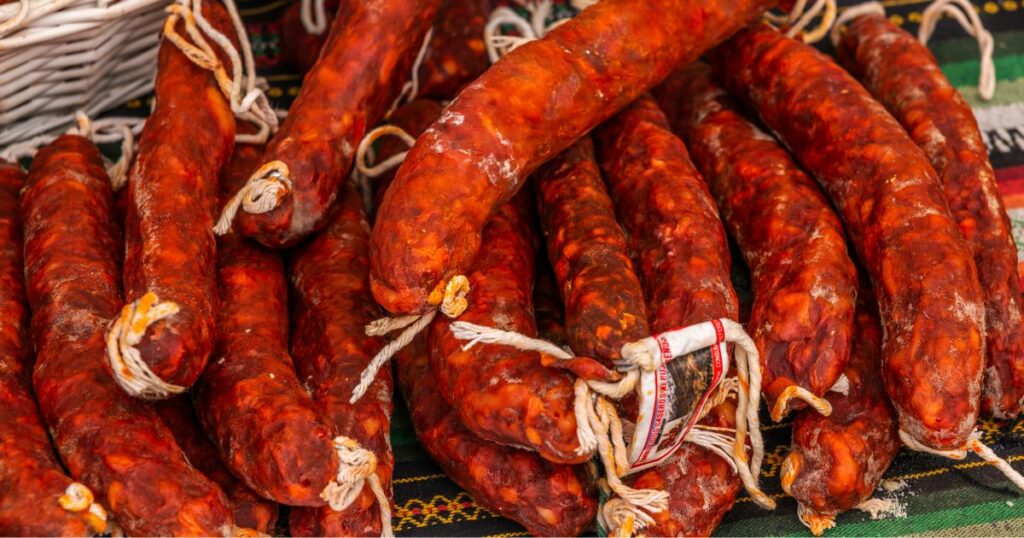
Csabai kolbász is another Hungarian smoked sausage that originates from the town of Békéscsaba. Similar to Gyulai kolbász, Csabai kolbász is made from coarsely ground pork and seasoned with a blend of spices, including paprika, garlic, and pepper. The sausage is known for its slightly spicier flavor and is often enjoyed sliced and served with pickles, bread, or alongside other charcuterie items.
Téliszalámi
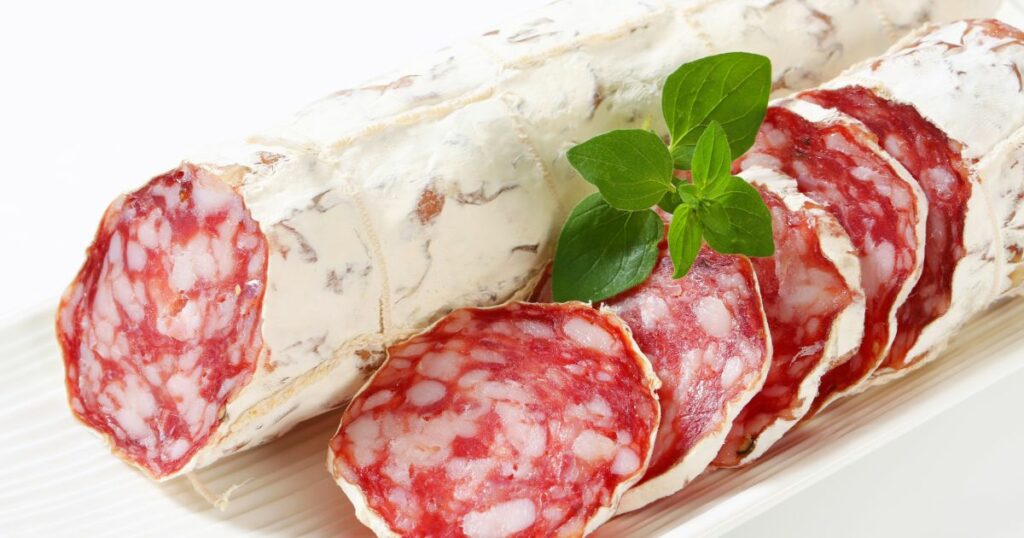
Téliszalámi, or Hungarian winter salami, is a cured sausage made from a mixture of pork and beef. The meat is seasoned with a blend of spices, including garlic, black pepper, and allspice, before being encased in a natural casing and cold-smoked over beechwood. The sausage is then aged for several months, developing a dense texture and complex, savory flavor that is enjoyed on its own or as part of a charcuterie board.
Szalonna
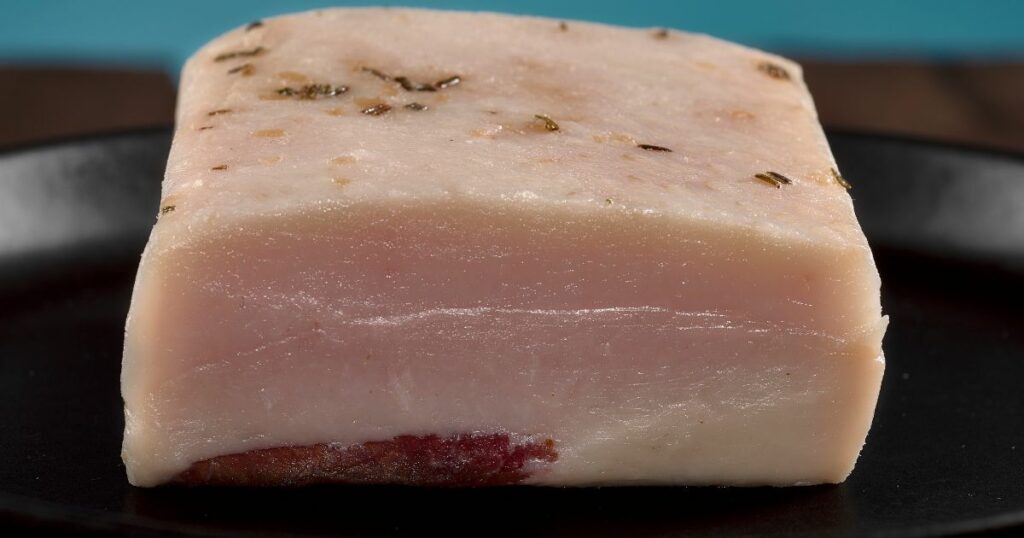
Szalonna is a traditional Hungarian smoked and cured pork product that is similar to bacon. Made fromthe pork belly, szalonna is seasoned with a variety of spices and smoked over beechwood or other hardwoods. The result is a rich, flavorful meat with a slightly smoky taste and a firm texture that can be enjoyed on its own, cooked over an open flame, or as an ingredient in a variety of Hungarian dishes, such as stews and soups.
In conclusion
Charcuterie is a diverse and fascinating culinary tradition that showcases the unique flavors, techniques, and ingredients of various countries and regions around the world. From the smoky, robust flavors of German meats to the delicate, refined tastes of Italian and French charcuterie, there is truly something for everyone to enjoy. The next time you find yourself craving a flavorful snack or a stunning appetizer, consider exploring the world of charcuterie and sampling some of the delicious offerings from around the globe.
𐡸 𐡸 𐡸 𐡸 𐫱 𐡷 𐡷 𐡷 𐡷
Charcuterie is a French culinary term that refers to the art of preparing and assembling cured meats and other meat products, often served on a platter or board. Charcuterie has become popular worldwide, with various countries and regions developing their own unique styles and flavors.
While pork is the most common meat used in charcuterie, other meats such as beef, duck, and even wild game can be used to create a variety of cured meats and sausages.
Charcuterie should be stored in a cool, dry place, preferably in a refrigerator or a dedicated curing chamber. When storing charcuterie, it is essential to maintain proper airflow and humidity levels to prevent spoilage.
The shelf life of charcuterie varies depending on the specific product and how it is stored. Generally, cured meats can last for several weeks to months when stored correctly, while sausages and other meat products may have a shorter shelf life.
Yes, making charcuterie at home is possible with the right tools, ingredients, and knowledge. There are many resources available, including books, online tutorials, and workshops, that can teach you the techniques and skills needed to create your own delicious charcuterie items.
